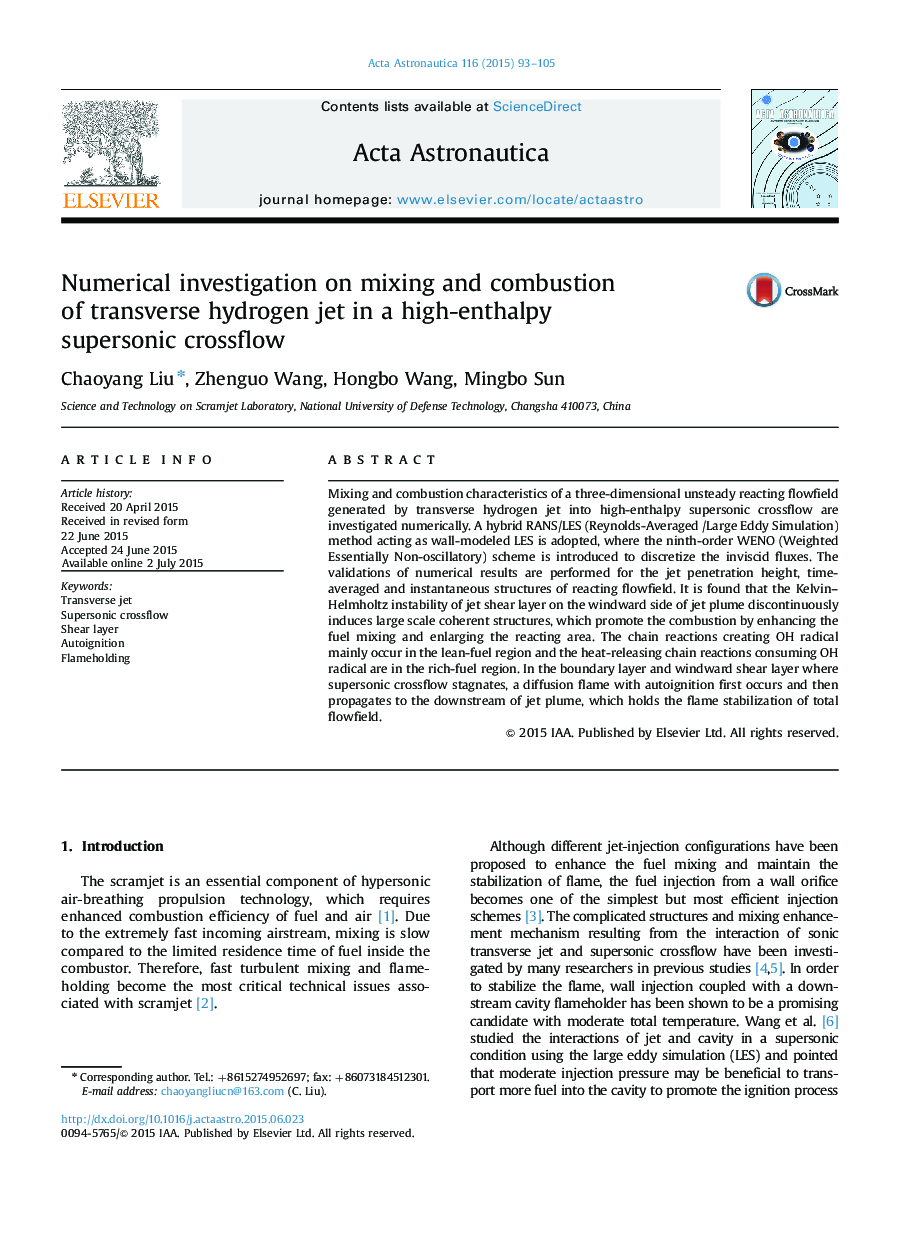| Article ID | Journal | Published Year | Pages | File Type |
|---|---|---|---|---|
| 1714282 | Acta Astronautica | 2015 | 13 Pages |
•LES method using ninth-order WENO scheme is applied to capture the large scale vortices.•The chain reactions creating OH radical occur in the lean-fuel region, whereas the chain reactions consuming OH radical and creating H2O are mainly in the rich-fuel region.•A diffusion flame with autoignition holds the flame stabilization of the flowfield.
Mixing and combustion characteristics of a three-dimensional unsteady reacting flowfield generated by transverse hydrogen jet into high-enthalpy supersonic crossflow are investigated numerically. A hybrid RANS/LES (Reynolds-Averaged /Large Eddy Simulation) method acting as wall-modeled LES is adopted, where the ninth-order WENO (Weighted Essentially Non-oscillatory) scheme is introduced to discretize the inviscid fluxes. The validations of numerical results are performed for the jet penetration height, time-averaged and instantaneous structures of reacting flowfield. It is found that the Kelvin–Helmholtz instability of jet shear layer on the windward side of jet plume discontinuously induces large scale coherent structures, which promote the combustion by enhancing the fuel mixing and enlarging the reacting area. The chain reactions creating OH radical mainly occur in the lean-fuel region and the heat-releasing chain reactions consuming OH radical are in the rich-fuel region. In the boundary layer and windward shear layer where supersonic crossflow stagnates, a diffusion flame with autoignition first occurs and then propagates to the downstream of jet plume, which holds the flame stabilization of total flowfield.
